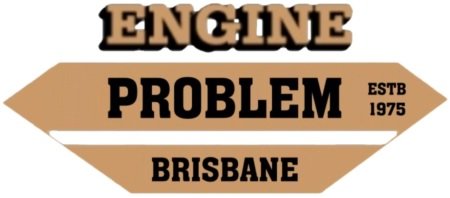Big End Engine Problem
To assist us in correctly diagnosing the type of Big End problem you are experiencing, please select the correct menu item.
Common causes of bigend bearings also known as conrod bearings can fail from a number of reasons. Conrod bearing failure can be a result of oil starvation, incorrect engine assembly, conrod tunnel distortion & more. Engine Problem helps you diagnose your big end fault & causes head over to our engine assembly page for find out more information on how to reassemble your engine.

Big End engine problem - FLOGGED / SEIZED / PICKED UP
The most important factor in extended bearing life is the maintenance of good lubrication.
Oil starvation is the most common cause of bearing pick-up or seizure. Loss of oil allows metal to metal contact, which results in bearing damage. Running engines consistently at low oil levels will eventually cause severe bearing damage. If this metal to metal contact is maintained for long enough the bearing will eventually weld itself on to the shaft and complete seizure occurs.
A dry start is the most common cause of bearing seizure or damage in the early stages of the running in procedure. A dry start occurs when the oil pressure is not obtained prior to starting a new or rebuilt engine. At initial start up a new engine can have little or no oil at the engine bearings so it is critical that the engine is cranked with no compression (plugs or injectors removed) until oil pressure is registered at a gauge or light. After registration of the oil pressure have a short pause until the light reappears or gauge reads zero, then re-crank the engine to verify initial cranking oil pressure. Only now should engine go under compression and be started. If the vehicle is only fitted with an oil warning light a master gauge should be used to establish the oil pressure to ensure correct pressure is maintained when the oil is hot..
Insufficient clearance upon assembly will result in engine bearing damage and may lead to pick up or seizure. This would more likely to be the cause if only one bearing was damaged and the other bearings were in good condition. Insufficient clearance allows the same metal to metal contact as in oil starvation, resulting in a picked up or seized bearing.
Fatigued big end bearings have the appearance of pieces of the bearing material broken away in a random pattern. The cause "lugging" will be more noticeable in the upper rod bearings while the cause "over revving" more noticeable in the lower cap bearings. Engines that "idle" excessively can suffer the same symptoms as "overloading."
: Every care has been taken in writing this information and procedures, but no responsibility can be excepted for errors, omissions or misuse of this information and procedures. The information available on this site is for your instruction only and cannot be copied for sale, © copyright 2020 UMR Engines www.engineproblem.com.au

Big End engine problem - WORN OUT
Pre maturely worn out bearings can be the result of dirty or diluted engine oil.
When unsure and a cause must be established, take a sample of the used oil from the engine in a clean glass container and have it analysed. The result of the oil analysis will give definite answers to the cause of the failure. ( Eg high % of coolant, fuel, carbon, metal, silicon or foreign material )
Faulty workmanship can be the cause. If the failure happens within a reasonably short time after a rebuild several inspection will be vital to determine the exact cause.
Check con-rod tunnel size, crank pin size, bearing part number and size, bearing location.
Oil starvation in some engines can occur as the upper main shells can be interchanged with the lower shells causing oil starvation to the corresponding big end bearings. Crank finish, dry assemble or dry initial start are other common causes.
Close examination of bearing wear patterns will indicates what component is at fault. Eg. An offset wear pattern on the upper and lower shells would indicate a bent con-rod as the cause. Fine lines and scratches the length of the bearings indicate the introduction of abrasive material. Worn high spots on the bearing face and corresponding marks on the back indicate dirty assembly. Insufficient crush is evident by the polished areas on the back of the bearing.
: Every care has been taken in writing this information and procedures, but no responsibility can be excepted for errors, omissions or misuse of this information and procedures. The information available on this site is for your instruction only and cannot be copied for sale, © copyright 2020 UMR Engines www.engineproblem.com.au
